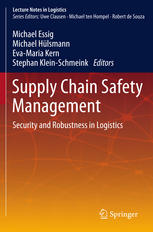

Most ebook files are in PDF format, so you can easily read them using various software such as Foxit Reader or directly on the Google Chrome browser.
Some ebook files are released by publishers in other formats such as .awz, .mobi, .epub, .fb2, etc. You may need to install specific software to read these formats on mobile/PC, such as Calibre.
Please read the tutorial at this link: https://ebookbell.com/faq
We offer FREE conversion to the popular formats you request; however, this may take some time. Therefore, right after payment, please email us, and we will try to provide the service as quickly as possible.
For some exceptional file formats or broken links (if any), please refrain from opening any disputes. Instead, email us first, and we will try to assist within a maximum of 6 hours.
EbookBell Team

4.7
56 reviewsCompanies face a variety of risks resulting from cost reduction strategies, rationalization measures, global sourcing, and outsourcing activities. Due to the large number of actors involved, extremely close ties emerge, which significantly increase supply chains’ vulnerability to disruptions – this has been shown again and again in the past few years. Against this background, the aspect of supply continuity is of increasing importance for all activities that relate to procurement, logistics, and supply chain management. Its objective is to ensure the continuous operation of supply chains, i.e., the uninterrupted flow of material, information, and coordination from the initial supplier to the end customer. Therefore, it is necessary to adopt adequate measures that take into consideration not only potential losses but also potential gains (so-called speculative risks).
With this book, the concept of Supply Chain Safety Management is introduced. The concept itself is embedded in a comprehensive and dynamic management process. Depending on a supply chain’s individual objectives, a set of courses of action is offered for any risk factors – whether they are identifiable and quantifiable or not. The practicability of Supply Chain Safety Management is highlighted by various case studies.
The book “Supply Chain Safety Management: Achieving Security and Robustness in Logistics” targets both the areas of science and of practice. First, the state of the art in research is reflected and valuable impulses for new and respectively for further research fields are provided by taking into consideration the points of view of scientists and practitioners in the business environment. Next, theoretically well‐substantiated, modern approaches and tools applicable to the business world are offered, an impetus for new ideas and fields of positioning is given and best practice examples are presented allowing a fruitful exchange of experiences between practitioners.